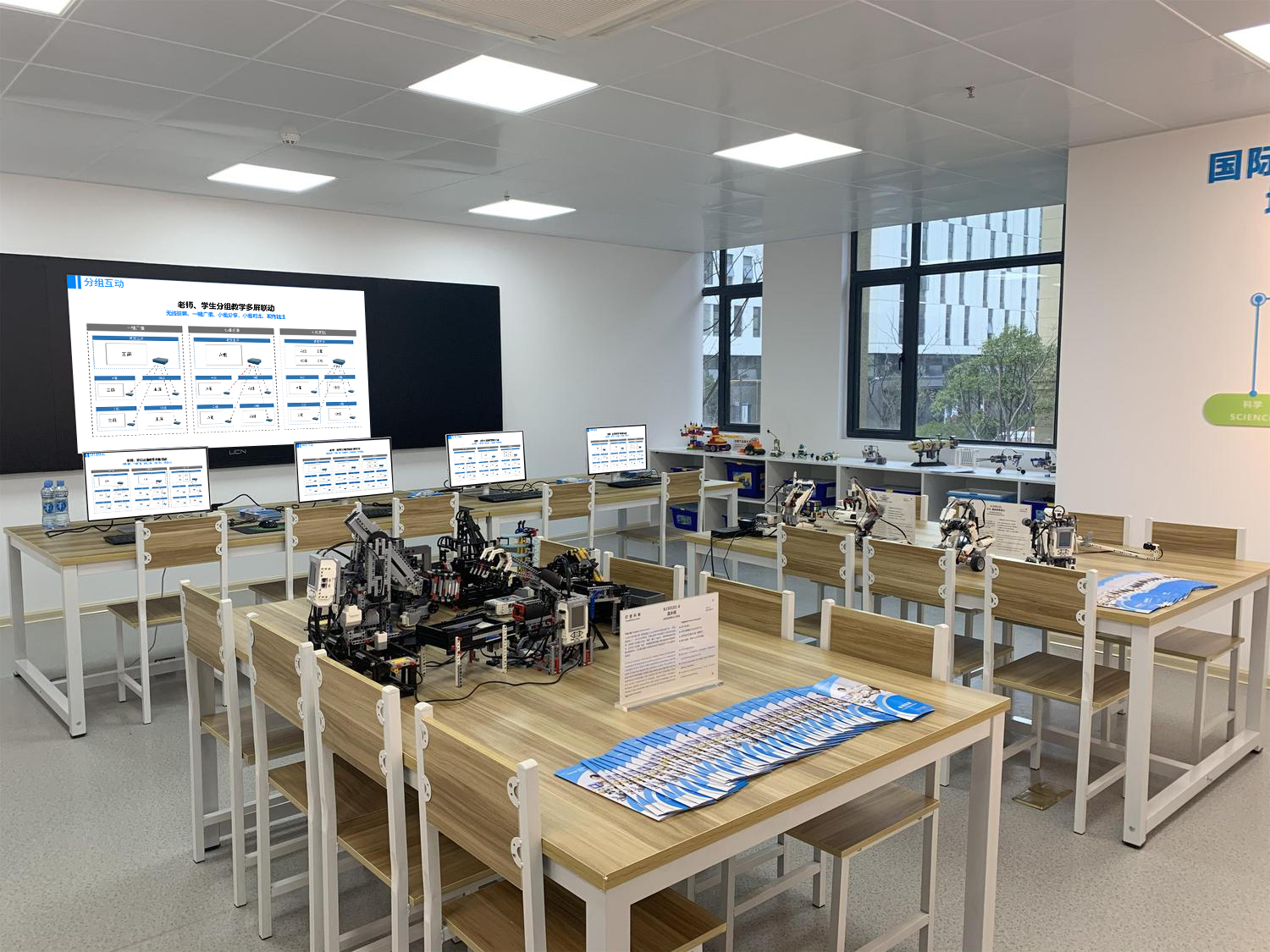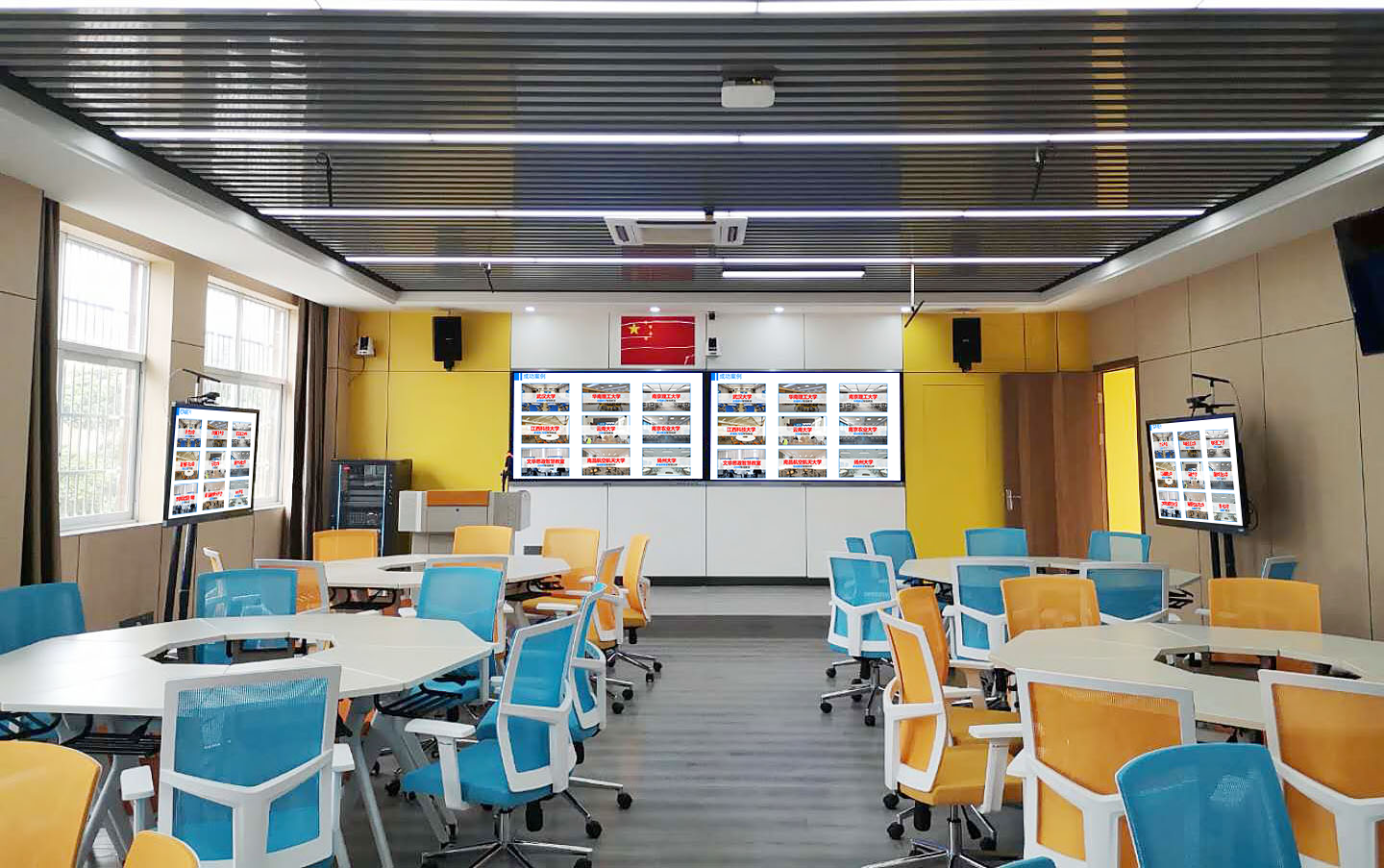Smart Classrooms: Ushering in a New Era of Intelligent and Efficient Teaching
As educational informatization continues to advance, traditional classrooms are gradually transforming into smart classrooms. By leveraging advanced technology, smart classrooms break the limitations of time and space in teaching, promote changes in teaching methods, and create an efficient, interactive, and personalized educational environment for teachers and students.
Technology Architecture: Multi-System Integration, Building an Intelligent Foundation
Smart classrooms integrate cutting-edge technologies like the Internet of Things (IoT), cloud computing, and artificial intelligence (AI). IoT enables device interconnection, allowing teachers to remotely control classroom lights, curtains, and air conditioning to optimize the teaching environment. Cloud computing provides powerful storage and computing capabilities, supporting the cloud storage of educational resources that students can access at any time. AI technology is used for smart attendance and academic analytics, helping teachers deliver precise instruction. For example, a facial recognition system can take attendance as soon as a student enters the classroom, and it can also analyze student expressions and actions to assess their level of focus.
Interactive Features: Strengthening Teacher-Student Interaction, Boosting Participation
- Wireless Screen Mirroring for Easy Display: The system supports mainstream protocols like AirPlay and Miracast, allowing teachers and students to easily mirror content from their phones, tablets, and computers to the large screen. Teachers can display courseware and videos at any time, and students can also mirror their work to share their learning outcomes, which increases class participation. For example, in a history class, a student can mirror historical documents they’ve collected on their phone to discuss with the class.
- Electronic Whiteboard for Real-time Annotation: Equipped with an electronic whiteboard, the system supports handwriting, drawing, and annotation. Teachers can annotate explanations directly on courseware, documents, and images, and students can also operate the board, enhancing interactivity and the hands-on experience. In a math class, a teacher can use the electronic whiteboard to derive formulas and write out problem-solving steps on the spot.
- Group Collaboration for Shared Progress: Group discussion areas are equipped with interactive group screens. Members can share ideas via wireless mirroring and work together on tasks. The teacher can monitor group discussions in real time and provide guidance. For example, during a role-playing rehearsal in an English class, students can prepare lines and assign roles on their group screens.
- Online Quizzes for Timely Feedback: Teachers can use teaching software to create multiple-choice, fill-in-the-blank, and short-answer questions for students to answer on their devices. The system instantly tallies scores and analyzes incorrect answers, helping the teacher understand the students’ learning status and adjust their teaching strategies. After a short quiz in a physics class, the teacher can quickly explain key points based on the answer data.

Scenario Applications: Adapting to Diverse Teaching, Igniting Classroom Vitality
- Theoretical Teaching: Teachers use multimedia resources like 3D models and animated videos to make abstract knowledge tangible. They can use screen mirroring and electronic whiteboard annotations to guide students’ understanding. For example, in a geography class, a teacher can mirror a 3D animation of the Earth’s rotation and annotate key information to help students grasp the principles of geographical phenomena.
- Experimental Teaching: Experimental equipment can be connected to the smart classroom system to collect and mirror data in real time. Students can use their phones to film the experiment, and the footage can be mirrored for the whole class to analyze. In a biology lab, a student can film their observation of cells and discuss the characteristics of cell structures with their group.
- Remote Teaching: A video conferencing system enables synchronized teaching across different regions. The main teacher’s video, audio, and courseware are transmitted in real time to a distant classroom, and students from both locations can interact and communicate. This allows schools in remote areas to share high-quality educational resources and be in the same class as urban schools.
- Personalized Learning: The system uses student data, such as homework, test scores, and classroom interactions, to recommend personalized learning resources, like video explanations or practice questions. Students can also independently check their progress to find and fill knowledge gaps. For example, a student in a Chinese language class can read extracurricular books recommended by the system that are at their appropriate reading level.
Management and Maintenance: Smart Operations, Reducing Labor Costs
- Device Management Platform: Administrators can use a platform to monitor the real-time status of classroom devices, such as the projector, computers, and interactive screens. They can remotely turn devices on/off, upgrade software, and troubleshoot problems, which improves maintenance efficiency. When a device fault is detected, the platform sends an alarm, and the administrator can diagnose and fix it remotely, minimizing disruption to teaching.
- Resource Management System: Educational resources like courseware, videos, and test questions are categorized and stored. Teachers can quickly retrieve, upload, and download resources and can also rate and share them. The school can review the quality of resources to ensure they meet teaching needs. For example, during a final exam review, a teacher can quickly find review materials for various subjects from the resource library.
- Data Security Assurance: Encryption technology is used to protect educational data, preventing data leaks and tampering. A strict access control system is in place, with different users having different permissions. Students can only view their learning-related data, teachers can manage educational resources, and administrators are in charge of system settings. This ensures the data in the smart classroom is secure and reliable.
With its powerful functions and innovative applications, the smart classroom is bringing about a revolution in education and teaching. From technology support to interactive experiences, from scenario applications to management and maintenance, it comprehensively helps improve teaching quality and efficiency. It is an important direction for the development of modern education and is expected to be popularized in more schools to cultivate innovative talent that meets the needs of the new era.